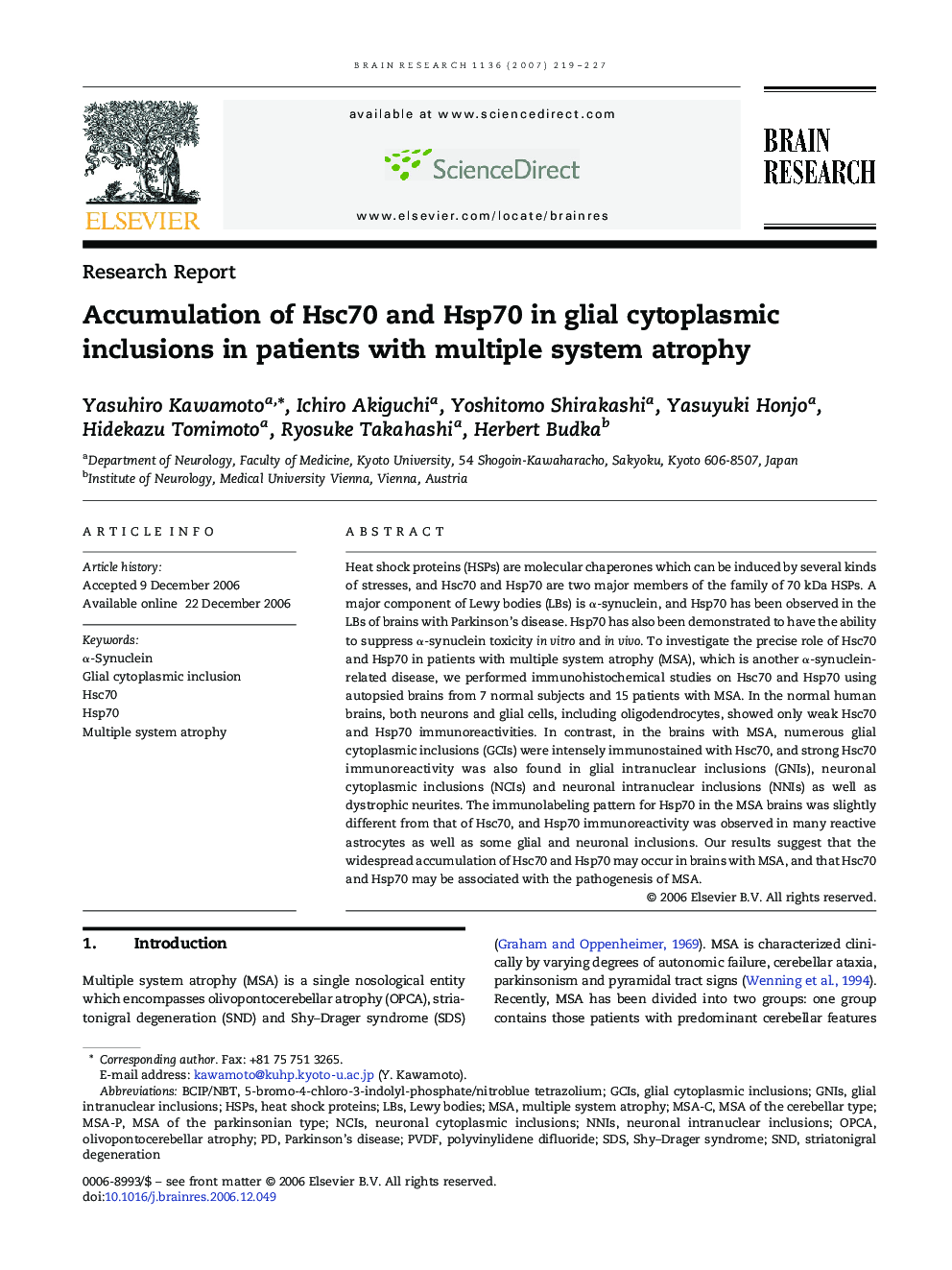| Article ID | Journal | Published Year | Pages | File Type |
|---|---|---|---|---|
| 4331541 | Brain Research | 2007 | 9 Pages |
Heat shock proteins (HSPs) are molecular chaperones which can be induced by several kinds of stresses, and Hsc70 and Hsp70 are two major members of the family of 70 kDa HSPs. A major component of Lewy bodies (LBs) is α-synuclein, and Hsp70 has been observed in the LBs of brains with Parkinson’s disease. Hsp70 has also been demonstrated to have the ability to suppress α-synuclein toxicity in vitro and in vivo. To investigate the precise role of Hsc70 and Hsp70 in patients with multiple system atrophy (MSA), which is another α-synuclein-related disease, we performed immunohistochemical studies on Hsc70 and Hsp70 using autopsied brains from 7 normal subjects and 15 patients with MSA. In the normal human brains, both neurons and glial cells, including oligodendrocytes, showed only weak Hsc70 and Hsp70 immunoreactivities. In contrast, in the brains with MSA, numerous glial cytoplasmic inclusions (GCIs) were intensely immunostained with Hsc70, and strong Hsc70 immunoreactivity was also found in glial intranuclear inclusions (GNIs), neuronal cytoplasmic inclusions (NCIs) and neuronal intranuclear inclusions (NNIs) as well as dystrophic neurites. The immunolabeling pattern for Hsp70 in the MSA brains was slightly different from that of Hsc70, and Hsp70 immunoreactivity was observed in many reactive astrocytes as well as some glial and neuronal inclusions. Our results suggest that the widespread accumulation of Hsc70 and Hsp70 may occur in brains with MSA, and that Hsc70 and Hsp70 may be associated with the pathogenesis of MSA.
